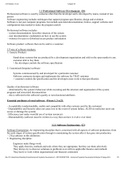Summary
Summary: Software Engineering, Global Edition, ISBN: 9781292096131 INF3705 - Advanced Systems Development
- Course
- Institution
- Book
Chapter summaries for INF3705 - Advanced Systems Development. All prescribed chapters covered in the summaries. Headings with page references, as well as Figures / Photos from the textbook included (also with notations and page references).
[Show more]




